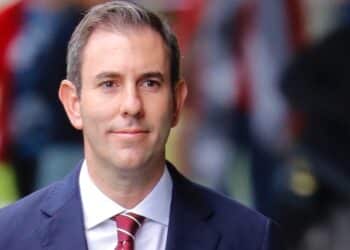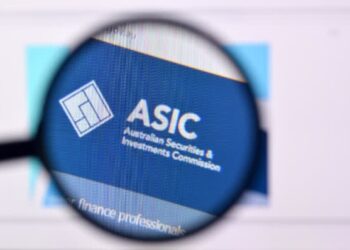For the six months leading up to December, the group’s underlying net profit after tax (UNPAT) was $61.3 million, falling in the range of its downgraded profit after it bought ANZ’s pensions and investments (P&I) business, and a 39 per cent fall from the year before. However, the figure included $4.3 million in UNPAT from discontinued operations.
UNPAT from continuing operations (excluding Ord Minnett, AET Corporate Trust and Perennial Value Management) was $55.6 million, plunging by 61 per cent from the year before.
Funds under management, advice and administration (FUMA) was up by 5.2 per cent to $145.7 billion, but IOOF chief executive Renato Mota reported the group’s earnings had been deteriorated by divestments, the reduced economic interest from the ANZ P&I coupon, an uplift in costs associated with governance and continued pricing pressure.
The integration of P&I into IOOF is one of three key elements in the group’s “transformation plan” moving forward. The other two are: “Evolve 21”, its endeavour to simplify its platform suite into one contemporary platform (not including the P&I products), and “Advice 2.0”, its plan to make its financial advice segment a standalone business.
The advice segment, excluding the ANZ wealth management acquisition, produced an UNPAT of $26.4 million for the half, down by 13.4 per cent from the prior corresponding period.
IOOF noted the division’s net operating revenue, which fell by 5.8 per cent to $93.6 million, was “adversely impacted” by competitive pricing from a third-party administrator – it reported since then IOOF has matched the offer.
Despite the profit fall in advice, the group is relying on the segment to increase its inflows, through “increasing adviser numbers, a relatively higher number of salaried advisers within that growing total, a better share of advice revenues for offering licensee services and increased returns from services to self-licensed advisers”.
As outlined in the last full-year results, there are three elements to the IOOF advice model going forward: salaried advisers, self-employed advice licensees and IOOF Alliances, a service provider providing institutional support for self-licensed groups.
All three elements will need to be transformed in order to make the advice segment profitable on its merit, Mr Mota said.
“We expect salaried advice to increase, we expect the self-employed advice licensee model to break even and that’s certainly not something that the current ex-ANZ licensees do,” he said.
“Certainly there is a new economic model that must be born out of that, certainly that portfolio, but more generally across the self-employed model.
“Each three of those [elements] will need to justify their existence but the bulk of the economic return we expect to come through our salaried corporatised advice model.”
Mr Mota expects the ANZ ADGs, acquired in 2018, to break even within two to three years.
During the second quarter of financial year 2020, 11 new advice practices joined the group, which saw an increase in FUMA of $985 million to $76.6 billion.
IOOF stated it is now the second largest advice business, with 1,443 advisers and the fifth-largest platform provider by funds under administration.
Mr Mota has said IOOF is committed to the “reinvention of advice”.
Shake-up of P&I products
The group had completed its $825 million acquisition of the P&I business at the end of January. Mr Mota said the purchase for IOOF, an advice-led business, improved its scale, reach and opportunities for transformation, but he noted the business was probably starved of investment in the lead up to the sale, resulting in outflows in a number of P&I products.
Mr Mota hinted the products may be due for a switch from their master trust structure to a more contemporary wrap package, similar to what has occurred with IOOF offerings.
“Now that we have the businesses and the capabilities, we’re looking to make sure that we underpin the service of that. And there had been recent improvements in service around that product set,” he said.
“But at the same time, there’s also an opportunity here to understand whether, in fact, the issues may be around product design. And certainly, being a master trust in nature, it’s different to a wrap structure.
“We’re determining whether there is a need, for master trust structure, or is there more appeal for the – let’s call them, the contemporary IOOF products, that tend to be wrap style in nature. There may be a substitute effect potentially, but at the same time, we’re also underpinning the existing offer on an ongoing basis to those clients.
“It’s a competitive marketplace. And we need to make sure that our products are contemporary, are for high quality service outcomes and are used on their merits.”
The investment management business generated the strongest improvement out of the segments, producing an UNPAT of $19.6 million, up 8.5 per cent.
Its net operating revenue of $34.5 million, up 5.6 per cent, is in line with market based growth in average funds flowing largely from improved platform FUMA, IOOF said.
Meanwhile, the portfolio and estate administration business copped a downfall, with its UNPAT down 19.9 per cent to $32.9 million and net operating revenue dropping 6.8 per cent to $112.1 million.




Trying to turn all the financial planning arms into salaried advisers only for maximum profit is his plan.
The dude looks smug in the photo, but can he deliver? Looking unlikely
Not only that what about reverse take over from worst culture, ethos change. Bought shares at peak and then sold at loss after doing in-depth research and meeting different people . Don’t know why it’s not evident to shareholders, media and IOOF Board. To start with giving the reigns to someone who slipped on meeting regulatory requirements for profits is not a good sign of things to come.
It’s not finished yet.
If Mr Mota thinks he is going to turn some of the ex ANZ groups into profit he’s in the wrong job
30 mill loss and licence fee freeze for two years
He may be better suited embarking on a stage show career.
Pinnochio !!
Good move by IOOF, new role created Chief Advise Officer. Now pick advisers like John Doyle and award them with adviser of the year award. Solid foundation for solid culture. Toxic culture and old cow boys for toxic results. Target met.